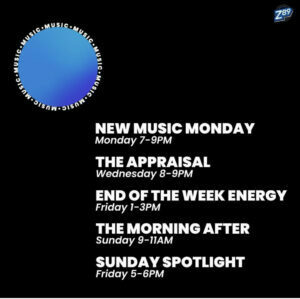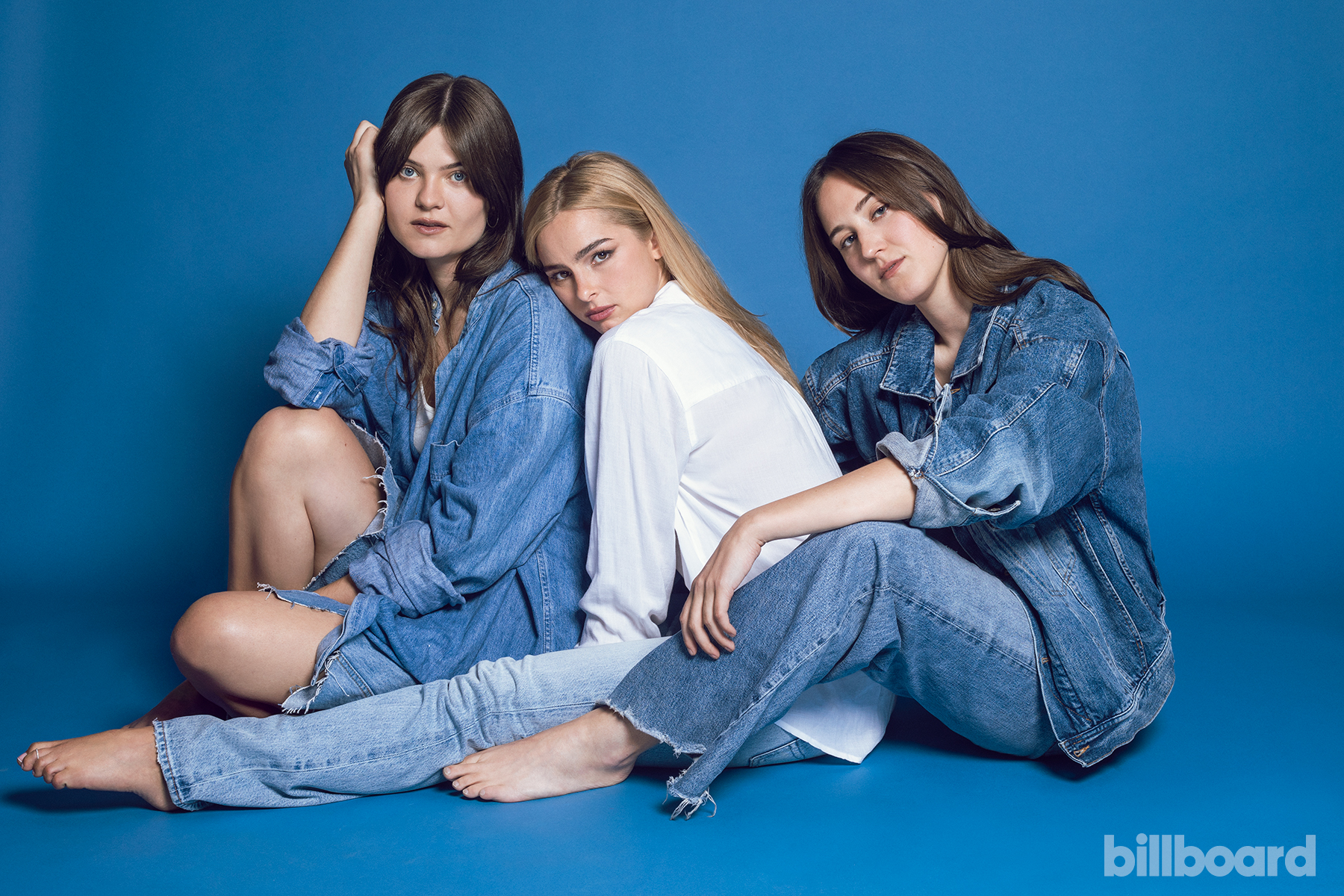Addison Rae & Her Producers on the ‘Different Energy’ of Their ‘Magic’ All-Women Studio Sessions
“Sometimes it takes you a long time to sound like yourself.”
That phrase is written on a sign above the bathroom at the studio of all-star vocal coach Eric Vetro. The first time Addison Rae saw it at her own lesson there, the influencer-turned-singer did what she often does when she finds something compelling: She pulled out her phone and took a picture to save for later inspiration.
“That’s a Miles Davis quote,” she tells me. “It is just the realest thing ever because not only does that apply as far as literal vocal warmups go — like, you could sound one way at the beginning of a lesson and another way at the end — but also just finding who you are takes a really long time.”
Today, it’s hard to imagine Rae ever felt lost in search of her true self. The 24-year-old confidently struts into Casa Vega, a Mexican spot in Sherman Oaks, Calif., wearing a wide smile and a bright white tutu at noon sharp to meet me for lunch. This storied place has been intertwined with showbiz’s rich and famous since it opened in 1956 — films like Once Upon a Time… in Hollywood and Valley Girl were shot here; Dakota Fanning has a signature margarita on the bar menu; Jane Fonda, Marlon Brando and Cary Grant were once regulars; and, more surprisingly, The Chainsmokers have a bronze plaque nailed to the wall above our booth. Rae’s entrance makes it immediately clear that she knows she is not only bearing witness to the restaurant’s celebrity history — she is part of it. It’s easy to believe her.
Back in 2019, Louisiana-born Addison Rae Easterling was in the process of self-invention. She got her start on TikTok that year as a beautiful girl next door, dancing to popular songs in her bedroom. The hope was that, if she just made enough videos and got enough followers, she could break into the entertainment business and have a multihyphenate career as a singer, dancer and actor. Within a few years, it worked. Rae — along with many of her TikTok contemporaries like Lil Huddy, Nessa Barrett and Dixie D’Amelio — were quickly scouted by major labels, which approached them with offers of big, shiny contracts and songs to record by proven hit-makers.
Rae did not grow up writing songs or playing musical instruments; all of her time was taken up by competitive dance. But she still seized her moment and, in early 2021, signed a deal with Sandlot Records, founded by chart-topping writer-producer Jacob Kash “JKash” Hindlin. By that March, she released her first single, “Obsessed.” Despite co-writing it with a who’s who of the writing/producing world, including Benny Blanco and Blake Slatkin, it was widely panned. Critics sneered at the cheeky dance-pop tune, claiming it was derivative and hollow (and that was nothing compared with the comments on social media).
“Initially, I was pretty let down by myself in a lot of ways because I had such high expectations,” Rae says of her early releases. “But I love music so much, and it’s ingrained in my life. It didn’t make sense for me to ever stop making it.”
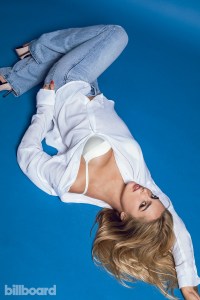
Rae wears a Lucky Brand Jeans top and jeans, Intimissimi bra and Agent Provocateur shoes.
Lia Clay
Rae has always prided herself on her work ethic: At her TikTok peak around 2020, she was known for pushing herself to make seven or eight clips a day. And in the years following “Obsessed,” she took the time to hone her artistry, applying the same determined approach that fueled her short-form video output to her music. She studied performance clips from her favorite artists — Madonna, Britney Spears, Michael Jackson, among others — and ramped up her own songwriting sessions. She also took more voice lessons and used Tumblr to assemble mood boards of colors, images, songs and videos. It was Rae’s way of articulating what she didn’t yet have the musical vocabulary for. After years of practice, releasing an EP (AR, which included “Obsessed”) and featuring on Charli xcx’s “Von Dutch” remix, Rae finally knew exactly what she wanted. Now she just had to find the partners who could translate it into a hit album.
“I went into [Columbia Records] with a binder full of my references, and I was like, ‘This is the album I want to make,’ ” she recalls. Though the industry’s gold rush to sign every TikToker who could carry a tune was largely over by fall 2023, Columbia saw promise in Rae’s renewed vision and signed her. Then, in spring 2024, one of her many songwriting sessions brought her into contact with Los Angeles native Luka Kloser, 27, and Stockholm-born Elvira Anderfjärd, 26, a writer-producer duo reared by Swedish hit-maker Max Martin’s MXM Publishing. The two women immediately clicked with Rae and understood her vision, helping her transform it within just one session into her musical proof of concept: “Diet Pepsi,” a breathy synth-pop track about the ephemerality of young romance.
Prior to meeting Rae, Kloser and Anderfjärd had already racked up impressive wins. Kloser worked on Ariana Grande’s “ordinary things” and Tate McRae’s “grave” as well as multiple projects with her own brother, who records as Kid Bloom; Anderfjärd has become a trusted collaborator for artists like Tove Lo and Katy Perry and remixed multiple rerecordings for Taylor Swift. Still, Anderfjärd says that working with Rae was an especially “lucky” experience for herself and Kloser, who are best friends as well as creative collaborators and have joined us for lunch at Casa Vega. “It’s so rare to get this kind of trust from an artist,” she says. Kloser adds: “I don’t think I’ve ever experienced such magic in a first session, for lack of a better word. I think it surprised us all.”
“Diet Pepsi,” released in August 2024, served as a hard reset for Rae’s music career, gaining her new listeners and bringing back old ones who had counted her out. It became a critical success and her first Billboard Hot 100 and Pop Airplay hit, peaking at No. 54 and No. 9, respectively. In the following months, Rae sequestered herself with Kloser and Anderfjärd, aiming to create a debut album as sonically clear and acclaimed as “Diet Pepsi.” In June 2025, Addison arrived, peaking at No. 4 on the Billboard 200, with only a single additional writer featured on one track (Tove Burman on “High Fashion”) outside of the trio. “Diet Pepsi” remains the album’s biggest commercial hit, but Addison spawned plenty of other standout tracks, including “Fame Is a Gun” and “Headphones On,” which also ranked on the Hot 100 and earned Rae the respect that had once eluded her.
“It’s hard to flip the public perception of you and she did it effortlessly,” says Charli xcx, a staunch supporter of Rae’s for years. “Her growth and evolution has been expedited because [Rae] knows herself and she’s truly not worried about what people think of her.”
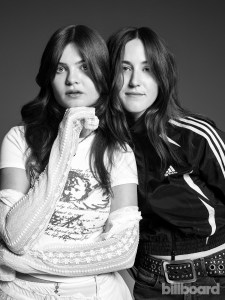
Anderfjärd (left) wears a Women’s History Museum vintage top and Venus in Tokyo skirt. Kloser wears an Adidas top.
Lia Clay
Over chips and salsa, I ask Rae what she attributes her success to: Hard work? Talent? Luck?
“I really just never give up and never quit, no matter what,” Rae says, flashing me a confident grin. “Really, what it comes back to is that I’m fearless — I’m not afraid of much. It doesn’t really take me much to try something new and go all in, and here, I went all in.”
“Diet Pepsi” was the first song the three of you wrote together. Tell me about the process of creating it.
Addison Rae: That one started with melody. I remember you were just on the piano, Luka. We were kind of nearing the end of the session and we were like, “OK, well, nothing happened. Nothing was inspiring. So I guess this was fun. You know, whatever.” Then we were like, “Let’s just keep playing.” And then Luka went on the piano and —
Luka Kloser: It’s so weird to think that those moments can be so substantial in your life. Had we been like, “Let’s go get dinner,” there’s a chance that we might have remained friendly but would never have entered this world of everything that has happened.
What are your roles in the studio when you’re working together?
Rae: It depends… Sometimes I’ll have a title or concept and just text it to them.
Elvira Anderfjärd: Addison has great one-liners.
Rae: That’s what happened with [Addison’s] “Summer Forever.” I just knew I wanted to name a song that, and we just went from there. A lot of my songs happen that way, except “Diet Pepsi.” That one was very on the spot while we were in a flow state writing.
Kloser: It’s nice when you have a super comfortable environment to create in because we are all able to share just any thought with one another, even if they aren’t thought out or massaged yet. It’s a no-judgment zone. That makes everyone feel a little bit more fluid in their roles. But it all typically starts with a lyric first or melody first.
When did you decide that you were going to lock in for a full album that would mostly involve just the three of you?
Rae: Once “Diet Pepsi” happened. We all knew it was really special, and so we were, for sure, planning to write again, and the next time we ended up writing was in Sweden… “Money Is Everything” was the second song that we made. “Aquamarine” was the third. Both just came from notes on my Notes app… I think titles can be so telling about what a song is going to be.
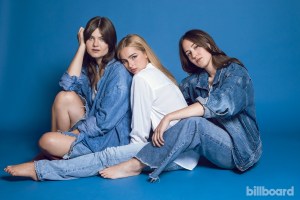
From left: Elvira Anderfjärd, Addison Rae, and Luka Kloser photographed on July 22, 2025 at Quixote Studios in Los Angeles.
Lia Clay
How did you take “Aquamarine” from a title to a full track?
Rae: I rewatched [2006 teen rom-com] Aquamarine and wrote down the word just as a title. So I walked [into our next writing session] with “Aquamarine” as a title, and we were kind of just like, “What does this even mean? How do you write a song called ‘Aquamarine’?” But aquamarine, the stone, represents rebirth and transformation, so I ended up being like, “How can we dive into that world?” And then the track just started happening. (To Kloser and Anderfjärd.) I remember we were rewatching that one clip of those flowers. Do you remember that? I had this YouTube video that I put on loop for us while we were making it, of these flowers blooming really quickly…
Anderfjärd: Yeah, you’d put on all those little background videos. Honestly, they were super important for the process. It puts us in a trance.
Rae: When we did “Summer Forever,” I remember there was that black-and-white old movie. Remember, with the people on the beach rolling around together? I put that on in the background. I do that, I think, every time we write.
Did going to Sweden bring a different energy to the room? How much does location affect the song that gets made?
Anderfjärd: I think so, but sometimes not in a way you’d expect. The first session, for “Diet Pepsi,” we were in the city in this little s—ty place. The vibes weren’t there, but that made us have to create our own.
Rae: Personally, I kind of thrive in a space where there’s no vibe because then everything naturally doesn’t sound as appealing. And then when you get something really special, it’s obvious. I think when you’re in a place or a space that’s too great of a vibe, almost anything could sound good.
“Diet Pepsi” came out in August 2024, and Addison did not arrive for almost another year. Why such a large gap?
Rae: As much as I would have loved for there to be a confirmed album date before I started putting music out, it just didn’t happen that way. When “Diet Pepsi” came out, we only had three songs done.
Just before writing and recording “Diet Pepsi,” you recorded the “Von Dutch” remix with Charli xcx. What did you learn from Charli or from watching the phenomenon of brat play out, and how did it inspire you in making your own music?
Rae: Charli really gave me the confidence as a writer, honestly. That’s why I felt so sure going into our sessions [for Addison, which happened soon after brat came out]. Most of the sessions I had done before I did the “Von Dutch” remix session with Charli, I had a lot of writers in the room, and I was feeling like I was leaning on writers a lot. Charli really leaned on me and gave me so much confidence, and that’s really when a big shift happened for me as far as being a songwriter.
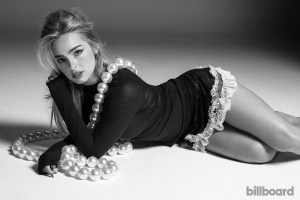
Rae wears an Intimissimi top, vintage skirt, and Vaquera necklace.
Lia Clay
It’s rare to see a pop album that only has three people in the liner notes — and even more rare to see liner notes that only list women. How do you think this affected the songs you three made?
Rae: I think the perspective of having a room of only females was just a really different energy than what we’re all used to. It doesn’t really happen very often… I didn’t expect it to happen this way, and I don’t think anybody else expected that from me, which was really nice because I think it’s always good to have people unsure of what you’re going to do. We are all around the same age and have similar life experiences in a lot of ways, being women in this industry.
Luka and Elvira, you’re signed to Max Martin’s MXM Publishing. What did you learn from watching Martin and other MXM-signed hit-makers?
Anderfjärd: The main thing is that the most important thing is the song. Honestly, it’s very easy to forget sometimes. You can get very stressed in a studio environment where it’s like, “Let’s finish the song when the day is over.” I think they create an environment of just taking our time with it because who’s going to care if it took a year to finish or a day?
Kloser: That’s true. It’s been beautiful to be able to have that kind of mentorship. And I second Elvira: The song is always first. The ego should be left at the door. Just worry about the song. Those guys still show up worried about what song they’re going to make today, and that’s it. It’s a beautiful example to have every day because it’s really about the love for the music. It sounds cheesy, but I think their success speaks for themselves — they’ve really led with their love for the craft more than anything.
Luka, you’re from Studio City, Calif., but you often work alongside Swedish talent, including Elvira. Why do you think Swedish pop producers have been so prominent over the past few decades?
Kloser: Oftentimes, people feel like there’s this mathematical approach to pop songwriting. That’s not completely wrong. There’s definitely a toolbox that is there, but I think what sets Scandinavian people apart is that they have free music education. Also, when I hear Swedish people talk, I find it to be very melodic. I just think music is so deep rooted there. Also, Elvira always says that it’s dark 90% of the year, so all you can do is huddle up and jam.
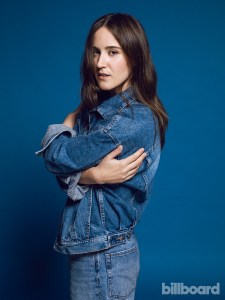
Luka Kloser
Lia Clay
Addison, what was it like to show the people around you “Diet Pepsi” for the first time? It was a big departure from your previous work. Did they immediately understand your vision?
Rae: There were people I played it to who were like, “I don’t know if this is what people want from you.” And I was like, “Well, I don’t think people know what they want from me.” If I had to give any advice to anybody, it would probably just be to do what you want and don’t do what people think they want from you because that’s already so many steps behind. Once you give somebody what they think they want, it’s old news already.
In the earliest part of your music career, did you feel like you were trying to give anyone what you thought they wanted?
Rae: Not necessarily. I didn’t think I was trying to please anyone but myself. I had a very imagined world of what my music career would look like since I was little.
Growing up in dance, my teachers were always playing Britney [Spears]. They were always playing [Lady] Gaga. The Fame had just come out when I was on a competition team and everybody loved Gaga’s music. I remember doing an opening number to Madonna’s “Hollywood” at my dance studio. I always loved these extravagant pop stars as a little girl. I was just like, “This is what it’s like to be a woman, to be a pop star.”
Maybe my EP felt a little bit more derivative of what I thought me as a pop star was, especially when I was growing up, but now I’ve become my own thing. I think the album totally took on a life of its own, and it became something that only we could have done by leaning on our instincts and our feelings. That’s why it feels so rare and singular.
Did the success of “Diet Pepsi” add a lot of pressure for you when you were making Addison?
Rae: I initially struggled with the idea of not having the album done before “Diet Pepsi” came out. There was so much unknown before “Diet Pepsi” came out. We didn’t really know what people would think, nor did we really care, which I thought was so nice. And then, people really loved it, which was really nice and so gratifying. But I think it definitely added a layer of pressure initially. It was a lot to follow up.
Anderfjärd: We talked about that a lot around that time because all of us felt that pressure, but then we said, “Let’s just not feel the pressure of making another ‘Diet Pepsi’ because why would we do that? It already exists.” I think once we settled into that mindset we just thrived.
Addison, your career has been very public from the beginning. How did the weight of public opinion affect you as a young musician who was still learning?
Rae: Initially, I was pretty let down by myself in a lot of ways because I had such high expectations. And then over time, I just completely let that go and released it. I know the way that music makes me feel, and I know that I trust my taste and my instincts.
And even though I took a kind of break over time to figure out what that meant to me, I think it was so necessary, and that led me to exactly where I needed to be, which is right here with Luka and Elvira.
What other moments when making the album felt like you really coming into yourself as an artist?
Rae: “High Fashion” is probably the one for me because I remember we were struggling at that time. We didn’t know where else to go creatively, maybe because of the success of “Diet Pepsi” around that time, and then “High Fashion” happened. That was one where I was like, “OK, I fully trust myself, I fully trust Luka and Elvira, and I fully trust this room we have.”
Initially, [making music together] was so naive. Everything we were making was for us and private. Once everything was being received in real time and we were still making the album, it felt different. And then “High Fashion” brought us back to that same feeling.
I had a phase where I was sitting in the studio for days and I had nothing. It was a struggle. It can be hard, communicating with people about your feelings and where you are in life, especially when you’re going through a lot. When I was really struggling, there was a lot of weight being put on [Luka’s and Elvira’s] backs because I was unable to offer up my energy in those moments. I think those times are necessary, though, where you just sit and play and nothing happens or comes out of it.
Anderfjärd: It’s those moments where either you can sit and do nothing with that and go home or you can sit and talk about it and become closer. A lot of those moments are what created the groundwork of making a song because we became close enough to talk about everything.
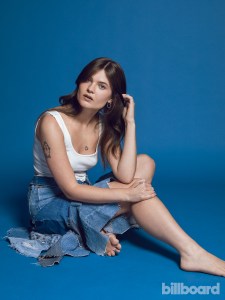
Anderfjärd wears a Venus in Tokyo skirt.
Lia Clay
Only 18.9% of songwriters on the Billboard Hot 100 year-end chart in 2024 were women, according to the University of South California’s Annenberg Inclusion Initiative. Women fared even worse in production roles, representing just 5.9% of production credits. Luka and Elvira, do you think your gender made it harder to break into the industry?
Kloser: In hindsight, allowing ourselves to actually feel it all: Yeah, it did make it harder. There are very supportive men in this industry. And we’ve been very lucky to be surrounded by men that believe in us. But I mean, it is just a thing, whether you actively feel that it is or not.
Anderfjärd: When I was younger, I didn’t want to make it into a thing at all because I felt like there was a culture of, like, you have to be tough. Now, being a little older, there’s actually things that are so annoying about being a young woman in production.
Kloser: Yeah, this might be self-inflicted, but I feel like I truly have to prove I can actually produce every single time. No one ever questions like, “Oh, he’s a producer. Oh, does he actually produce?”
Luka and Elvira, what do you think it is that makes Addison such a standout artist?
Anderfjärd: She’s a very creative person who’s very tapped into herself. She sees a whole vision ahead of her. It’s not just a song — it’s a beautiful visual, beautiful styling. For her, everything is connected.
Kloser: Addison is so energetic, optimistic and driven. She has incredible taste. That was the first thing I noticed when I met her. She is truly a student of pop culture, and she knows herself in a way that is infectious to watch.
Are you three making any new music together right now?
Kloser: Nope, this was the last time we’re ever [together]. We’re divorcing at Casa Vega. (Laughs.)
Rae: (Coyly.) We have. (Laughs.)
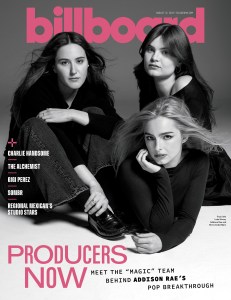
This story appears in the Aug. 16, 2025, issue of Billboard.
Powered by Billboard.
